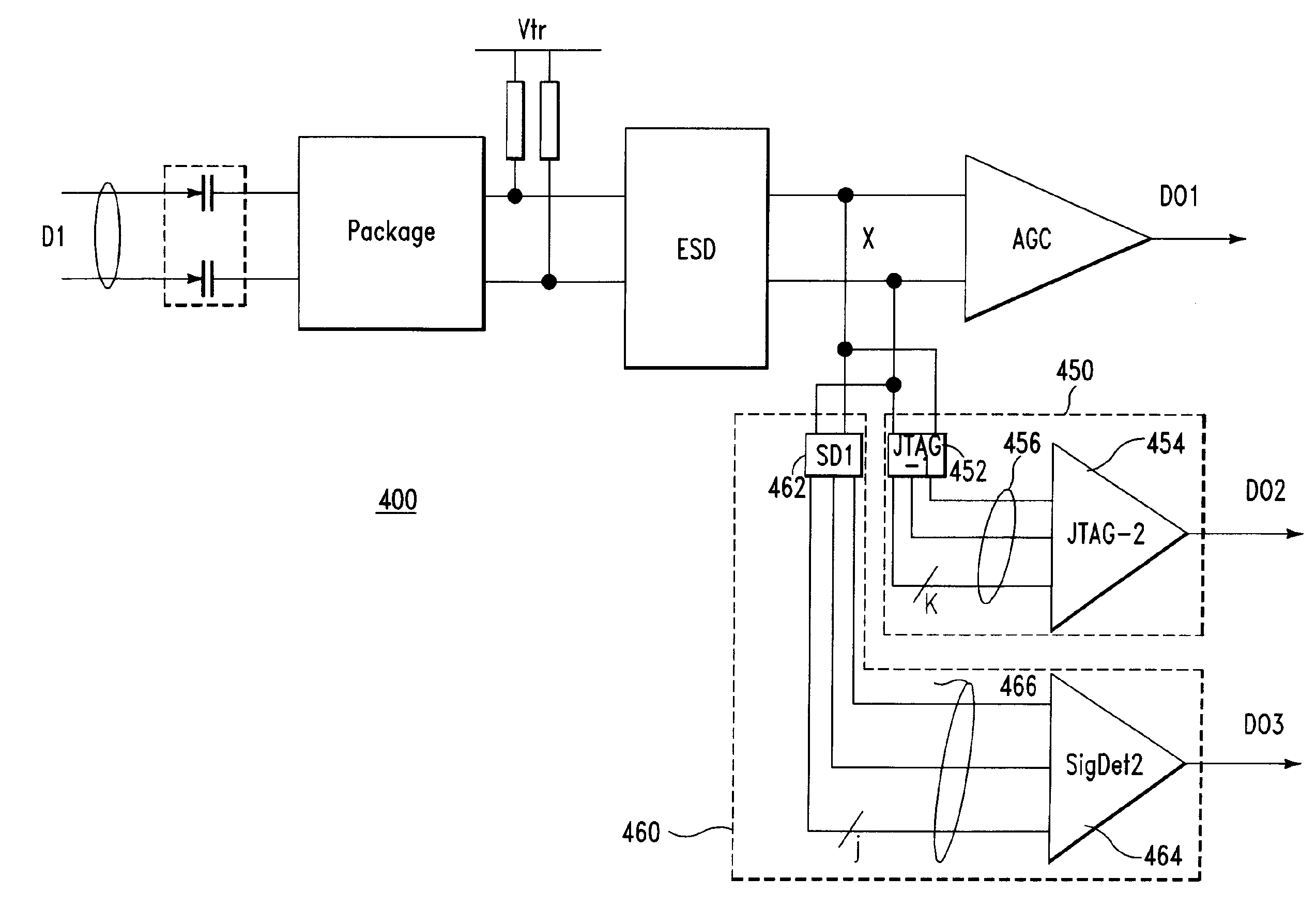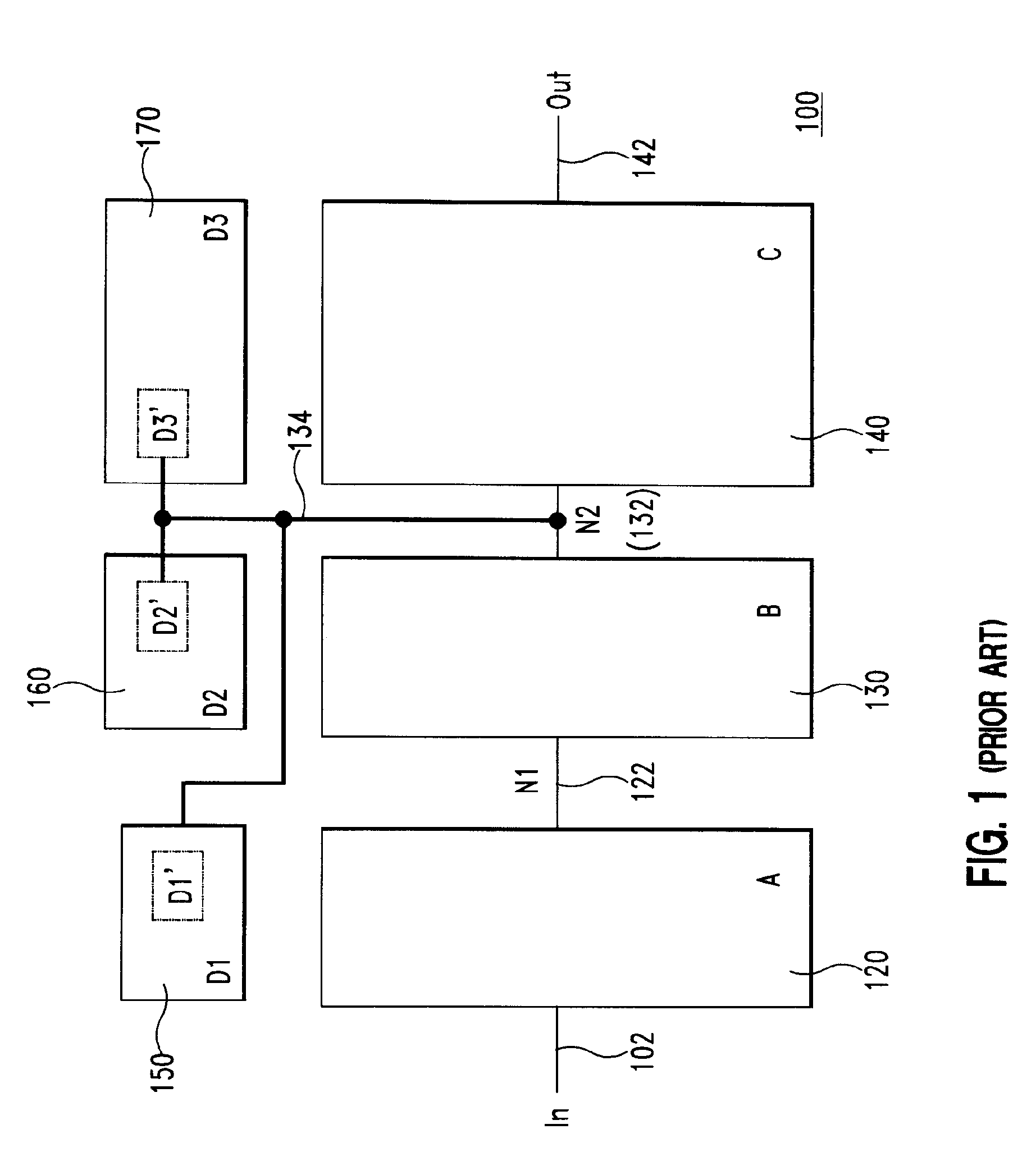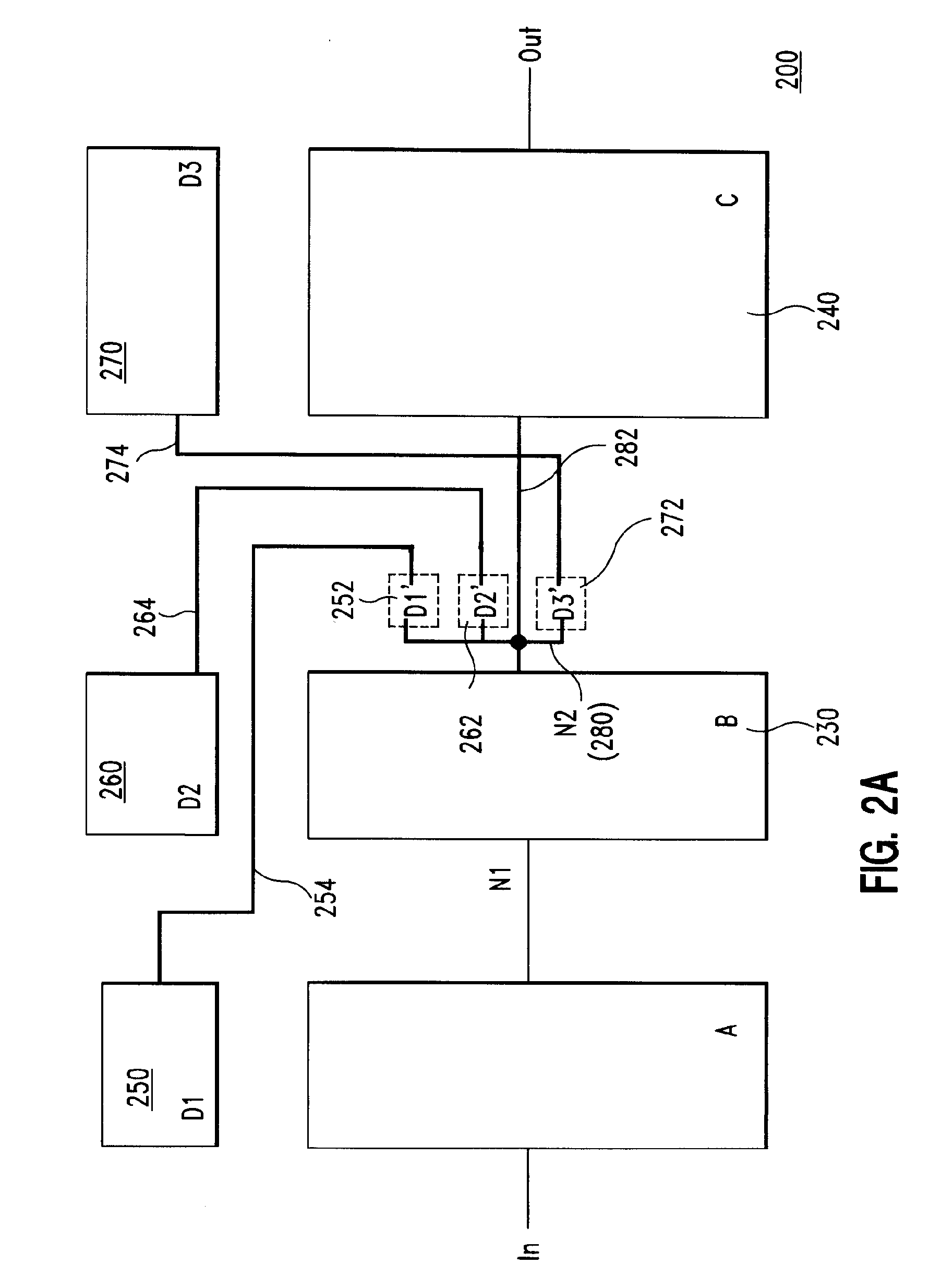Apparatus and method for reduced loading of signal transmission elements
a signal transmission element and load reduction technology, applied in the field of circuits, devices and methods for transmitting signals along conductors, can solve the problems of difficult to achieve well-matched terminations, particularly in communications-receiving circuits designed to transmit or receive signals from transmission lines, and are particularly sensitive to signal return loss, so as to achieve less capacitance and less return loss of that signal.
- Summary
- Abstract
- Description
- Claims
- Application Information
AI Technical Summary
Benefits of technology
Problems solved by technology
Method used
Image
Examples
Embodiment Construction
[0028]According to an embodiment of the invention described herein, an apparatus is provided in which a first signal, for example, an information-bearing signal such as a data signal, a control signal, or a clock signal, is conducted on a first conductor via a common node to a first circuit. The first circuit receives, conditions or otherwise utilizes the first signal. Illustratively, the first conductor defines a critical signal path. One or more signal-handling elements are also connected to the common node, such signal-handling element also receiving, conditioning, or otherwise utilizing the first signal. In one example, the signal handling element is an element which determines a state of the first signal in response to detecting a condition present at the common signal node. The signal-handling element includes an isolating circuit coupled to the common node, which is operable to output a second signal on a second conductor. The isolating circuit is operable to isolate the firs...
PUM
| Property | Measurement | Unit |
|---|---|---|
| frequencies | aaaaa | aaaaa |
| impedance | aaaaa | aaaaa |
| parasitic capacitance | aaaaa | aaaaa |
Abstract
Description
Claims
Application Information
 Login to View More
Login to View More - R&D
- Intellectual Property
- Life Sciences
- Materials
- Tech Scout
- Unparalleled Data Quality
- Higher Quality Content
- 60% Fewer Hallucinations
Browse by: Latest US Patents, China's latest patents, Technical Efficacy Thesaurus, Application Domain, Technology Topic, Popular Technical Reports.
© 2025 PatSnap. All rights reserved.Legal|Privacy policy|Modern Slavery Act Transparency Statement|Sitemap|About US| Contact US: help@patsnap.com



